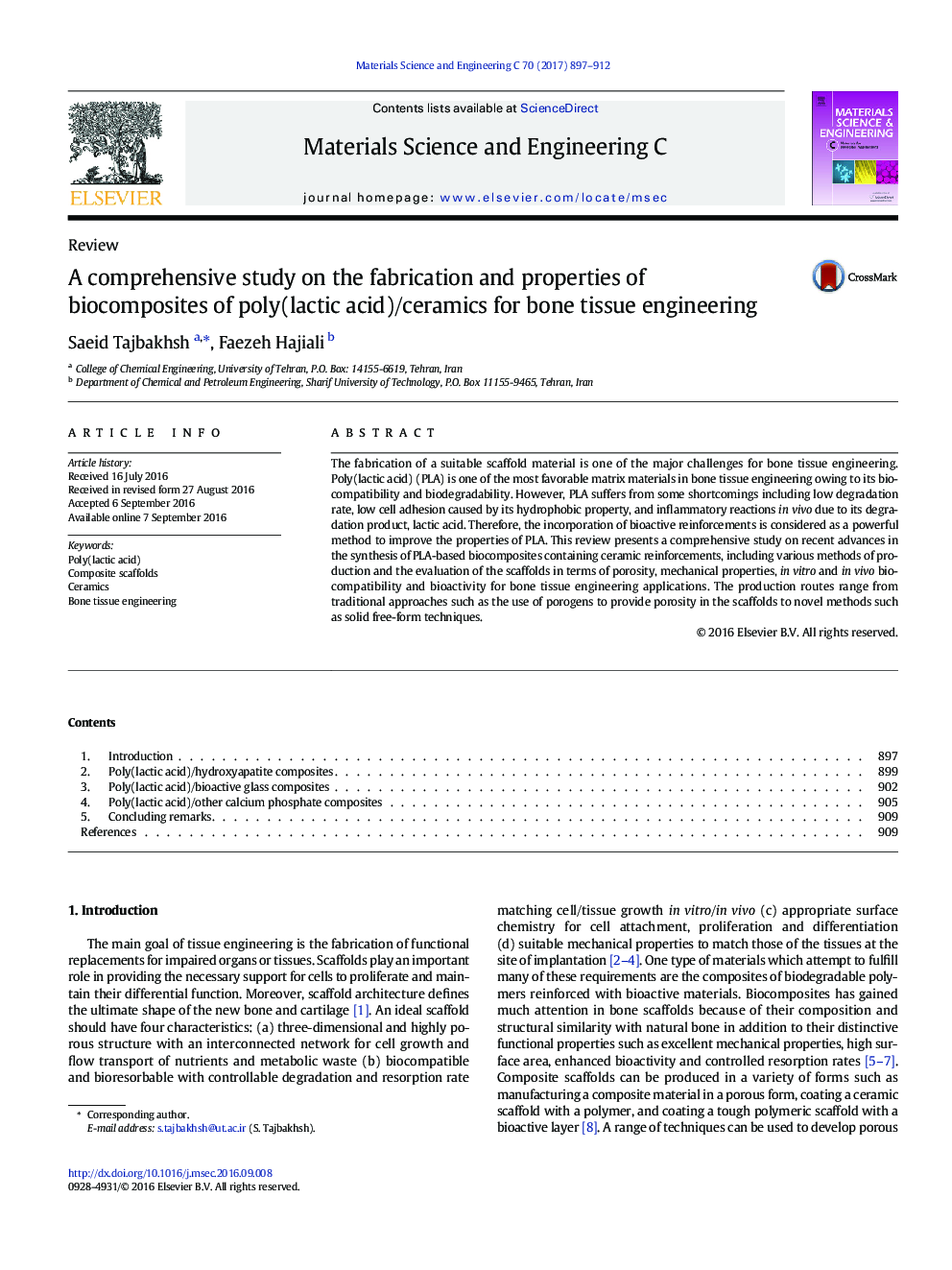| Article ID | Journal | Published Year | Pages | File Type |
|---|---|---|---|---|
| 6481356 | Materials Science and Engineering: C | 2017 | 16 Pages |
â¢Various composites of PLA containing HA, BG and other CaP materials are reviewed.â¢Different fabrication techniques from conventional to novel methods are studied.â¢Mechanical properties, biodegradability, and bioactivity of composites are presented.
The fabrication of a suitable scaffold material is one of the major challenges for bone tissue engineering. Poly(lactic acid) (PLA) is one of the most favorable matrix materials in bone tissue engineering owing to its biocompatibility and biodegradability. However, PLA suffers from some shortcomings including low degradation rate, low cell adhesion caused by its hydrophobic property, and inflammatory reactions in vivo due to its degradation product, lactic acid. Therefore, the incorporation of bioactive reinforcements is considered as a powerful method to improve the properties of PLA. This review presents a comprehensive study on recent advances in the synthesis of PLA-based biocomposites containing ceramic reinforcements, including various methods of production and the evaluation of the scaffolds in terms of porosity, mechanical properties, in vitro and in vivo biocompatibility and bioactivity for bone tissue engineering applications. The production routes range from traditional approaches such as the use of porogens to provide porosity in the scaffolds to novel methods such as solid free-form techniques.
